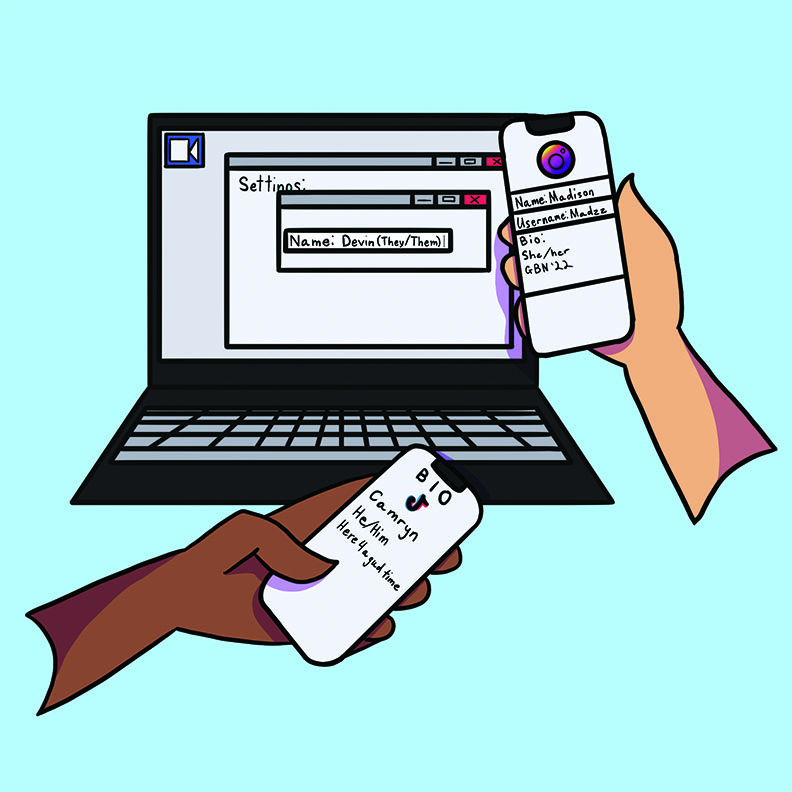Exploring the nuance of displaying personal pronouns
Sophomore Paul Wallace started displaying the personal pronouns “he/him” on Instagram and Zoom to show allyship towards transgender and nonbinary people.
The act of displaying pronouns shows that cisgender people are listening and trying, Wallace said in a video conference.
Cisgender people, those who identify with the sex they were assigned at birth, may choose to display pronouns on social media and Zoom to signal allyship to the LGBTQ+ community, create a safe space and show awareness of the impact of pronouns. Transgender and nonbinary people may display personal pronouns as a part of coming out or to remind others of their pronouns. While choosing to display pronouns may show solidarity, asking for someone’s pronouns can result in unintentionally harming a transgender or nonbinary person.
Tiffany Thompson, associate director for gender and sexuality initiatives at Swarthmore College, said personal pronouns are flexible ways people identify themselves. Pronouns can constantly change, which is why displaying them is important.
If a cisgender person is a self-declared ally and understands the importance of pronouns but hesitates to display them, that person may be conveying reluctance to being associated with the LGBTQ+ community, Thompson said in a video conference.
According to Wallace, cisgender people who are uncomfortable with the topic of pronouns need to imagine the discomfort transgender, nonbinary or gender-nonconforming people experience on a daily basis.
“Imagine … when they have to reassert their pronouns or correct someone who misgenders them,” said Wallace. “Imagine the constant state of awkwardness when your appearance doesn’t align with conventional gender roles.”
Rachel Levin, associate professor of biology and neuroscience and dean of women at Pomona College, said in a video conference that her experiences working within the transgender community and teaching a class called Science, Power and LGBTQ Identities prompted her to explore the nuanced issue of pronouns.
Discussion about pronouns and diversity should be normalized, but requiring people to share pronouns is not always the best way to encourage that discussion, Levin said.
“I grew into an awareness that I’m asking for personal information,” said Levin. “So, as a teacher, if I think I’m doing a very powerful, affirming thing by saying, ‘Everybody say your name and pronouns,’ … now I’m asking you to out yourself in a space [where] you don’t know whether it’s safe.”
According to Wallace, if teachers want to be allies to transgender and nonbinary students, they should display their own pronouns, instead of asking what pronouns students use.
“It’s better to keep [pronouns] about oneself, instead of pointing the finger at others because when you ask other people [for] their pronouns, you risk outing them,” Wallace said.
According to Thompson, even if the environment is safe, there is always possible risk in displaying one’s pronouns.
“We still don’t live in a world yet where everybody is not … homophobic, not transphobic, and we still live in a very heteronormative society,” Thompson said.
The positive and negative impacts of pronouns can influence students’ decisions to display pronouns on social media and Zoom.
“[Displaying] pronouns is not just a queer thing, it’s not just a gay thing or a trans thing,” said Thompson. “It’s a person thing.”


